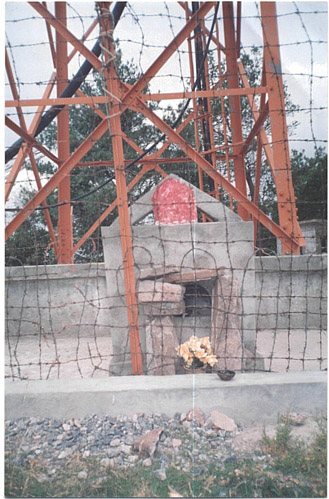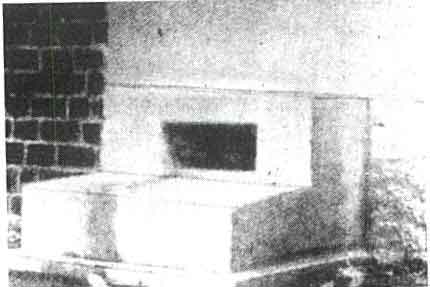
 |
|
Mai
Mari Da Asthan
"Resting Place of Mother Mary" The Grave of Mary, Mother of Jesus Christ Photo taken June 2001 (Murree, Pakistan) |
 |
|
An
older picture of the Mai Mari Da Asthan
|
|
The first picture above is a photgraph that was taken in June of 2001. This photograph was taken by a woman who has deep interest in the theory of a possible post-crucifixion life of Jesus Christ. The tomb is located in the city of Murree, in what is now known as Pakistan. Local traditions surrounding this tomb are conflicting. One tradition says that this spot [now located within a Pakistan TV antenna, as you can see] is the actual burial place of Mary, the mother of Jesus Christ. Another tradition says that it is not her burial place, but that it was a favorite spot that Mary would frequent to relax. Thus the name of this place, "Resting Place of Mother Mary." In either case, if the theory of a post-crucifixion life of Jesus Christ is correct, then the above site was either Mary's final "resting" place after she died, or it was her resting place during her life. A third possibility is that the above site could be both, and that those who buried her decided to bury her at her favorite spot. Now, in point of truth, there are several "tombs of Mary" located around the world. One exists in Turkey. Others claim that Mary was buried in France; some suggest England. There is a tomb in Kashgar believed to be the tomb of a "Mary" that some believe is the tomb of Mary Magdalene. In examining the various theories, though, one is astonished when one comes to realize the extent of the Jewish presence in India and Kashmir (see our page on the Lost Tribes of Israel ). If the theory of a post-crucifixion life is
true [naturally, we believe that it is!], then there seems to be much
more reason that Jesus and his mother, Mary, would travel to India than
to France. One simply does not find the myriad number of cities named
after Biblical personalities and Biblical cities and towns in France and
these other places as one finds in Kashmir. There have been many books
written by historians that place a large portion of the ten "lost"
tribes of Israel in the northern tier of Afghanistan, and in India. You
may be familiar with Tudor Parfitt and Niel Bradman's Cohanim DNA tests
that they performed on the Bene Israel of Alibag in India, in which they
established that tribes tie to Jewry. Critics claim that "tomb assignment" is a habit of the Eastern peoples, and that such tombs can be found all over the place. Well, in the case of Jesus, that is not the case. There does exist a theory that Jesus is buried somewhere in France, but there is no real evidence, other than a mound that, as we understand it, is inaccessible to the public. And there is a claim that Jesus is buried in Japan even. But there also the only evidence is a mound, though this one *is* accessible to the people. Yet, aside from these mounds, there does not exist the profusion of circumstantial evidence--both oral and written--as exist in Kashmir (see our Tomb page and read it throughly. You will notice that the headstone is in disrepair. The woman we call "Indiana Sue," for reasons that are personal to her, is very distraught over the condition of what remains of Mary's alleged grave, and has committed to attempt to raise funds to restore it. Her note on the back of the above photgraph that she sent to us reads as follows:
|